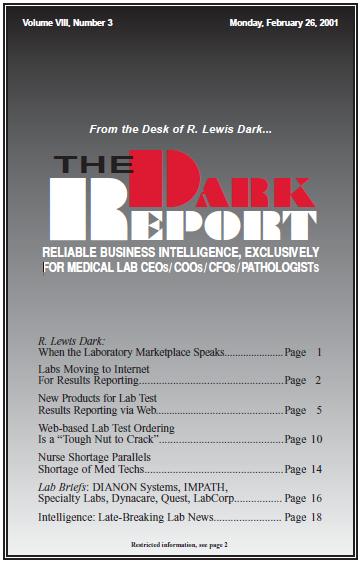DIANON & IMPATH REPORT 2000 EARNINGS TWO OF THE NATIONAL anatomic pathology companies reported fourth quarter earnings. Both DIANON Systems, Inc. and IMPATH, Inc. posted big gains in revenues and operating profits for 2000. At DIANON Systems, revenues reached $95.7 million, a gain of 26% over 1999 revenues of $76.1 million. Operating income in 2000 …
DIANON Systems, IMPATH, Specialty Labs, Dynacare, Quest, LabCorp Read More »
To access this post, you must purchase The Dark Report.


